Name Elagabalus Elagabalus Children Severus Alexander | Successor Alexander Severus | |
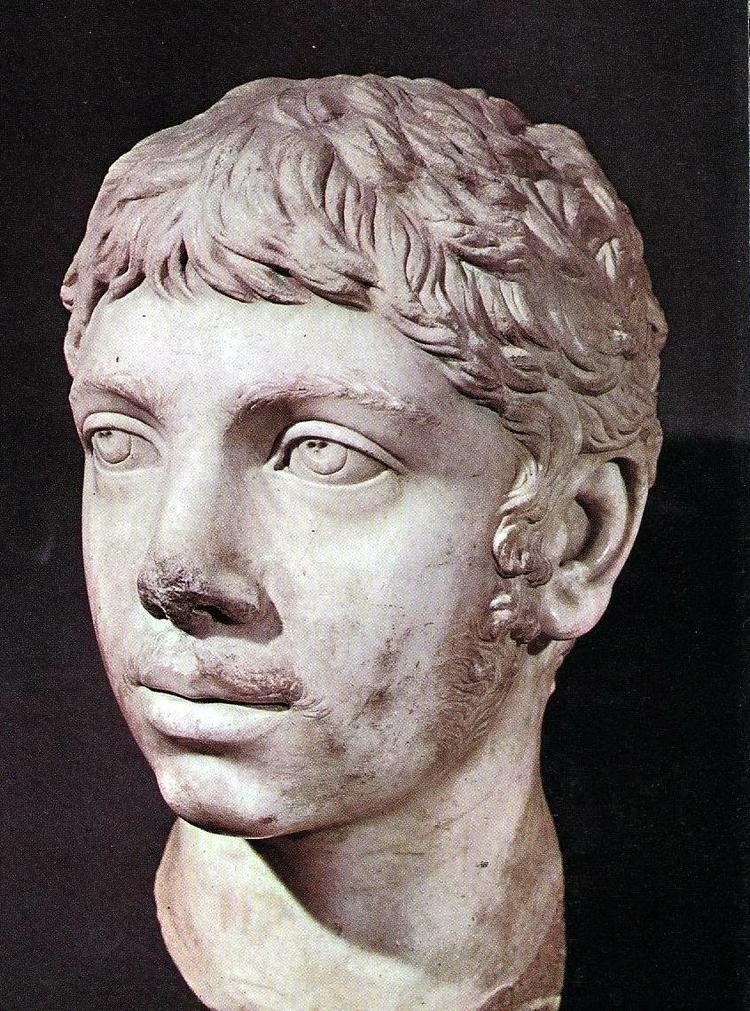 | ||
Reign 8 June 218 – 11 March 222 Issue Alexander Severus (adoptive) Parents Sextus Varius Marcellus, Julia Soaemias Similar People | ||
The roman emperor elagabalus
Elagabalus , also known as Heliogabalus (Latin: Marcus Aurelius Antoninus Augustus; c. 203 – March 11, 222), was Roman emperor from 218 to 222. A member of the Severan dynasty, he was Syrian, the second son of Julia Soaemias and Sextus Varius Marcellus. In his early youth he served as a priest of the god Elagabalus in the hometown of his mother's family, Emesa. As a private citizen, he was probably named Sextus Varius Avitus Bassianus. Upon becoming emperor he took the name Marcus Aurelius Antoninus Augustus. He was called Elagabalus only after his death.
Contents
- The roman emperor elagabalus
- Roman scandal 22 elagabalus and the problem of teen rule
- Family and priesthood
- Rise to power
- Emperor 218222
- Religious controversy
- Sexgender controversy
- Fall from power
- Assassination
- Legacy
- Biographies and literature
- Dance
- Music
- Paintings
- Plays
- Vocabulary
- References
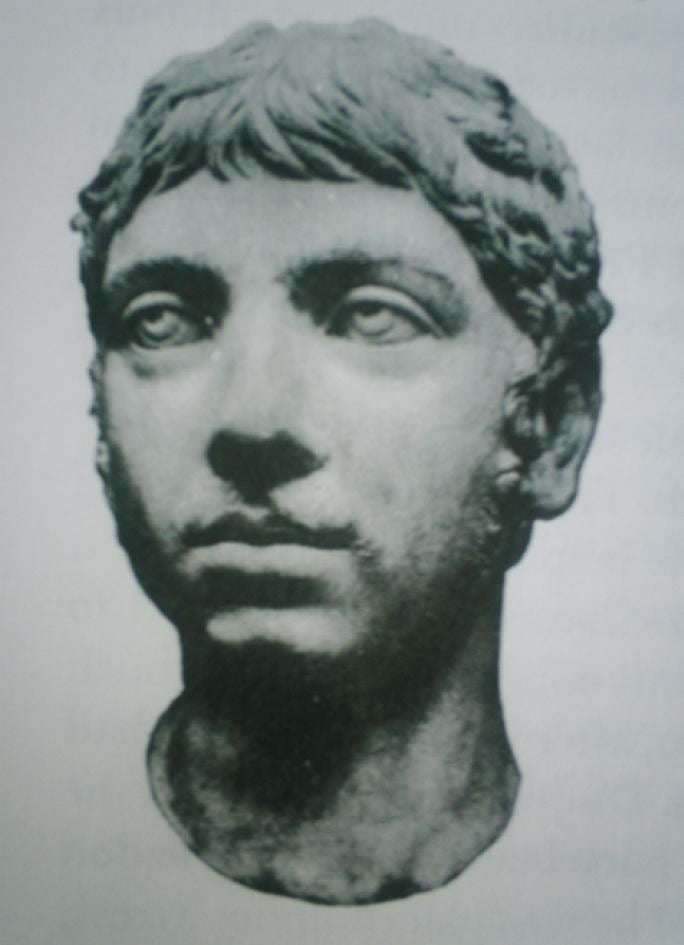
In 217, the emperor Caracalla was assassinated and replaced by his Praetorian prefect, Marcus Opellius Macrinus. Caracalla's maternal aunt, Julia Maesa, successfully instigated a revolt among the Legio III Gallica to have her eldest grandson (and Caracalla's cousin), Elagabalus, declared emperor in his place. Macrinus was defeated on 8 June 218 at the Battle of Antioch. Elagabalus, barely 14 years old, became emperor, initiating a reign remembered mainly for sex scandals and religious controversy.
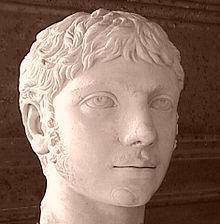
Later historians suggest Elagabalus showed a disregard for Roman religious traditions and sexual taboos. He replaced the traditional head of the Roman pantheon, Jupiter, with the deity Elagabalus, of whom he had been high priest. He forced leading members of Rome's government to participate in religious rites celebrating this deity, over which he personally presided. Elagabalus was supposedly "married" as many as five times, lavishing favours on male courtiers popularly thought to have been his lovers, and was reported to have prostituted himself in the imperial palace. His behavior estranged the Praetorian Guard, the Senate, and the common people alike. Amidst growing opposition, Elagabalus, just 18 years old, was assassinated and replaced by his cousin Severus Alexander on 11 March 222. The plot was devised by his grandmother, Julia Maesa, and carried out by disaffected members of the Praetorian Guard.

Elagabalus developed a reputation among his contemporaries for extreme eccentricity, decadence, and zealotry. This tradition has persisted, and with writers of the early modern age he suffers one of the worst reputations among Roman emperors. Edward Gibbon, for example, wrote that Elagabalus "abandoned himself to the grossest pleasures and ungoverned fury". According to Barthold Georg Niebuhr, "The name Elagabalus is branded in history above all others" because of his "unspeakably disgusting life".
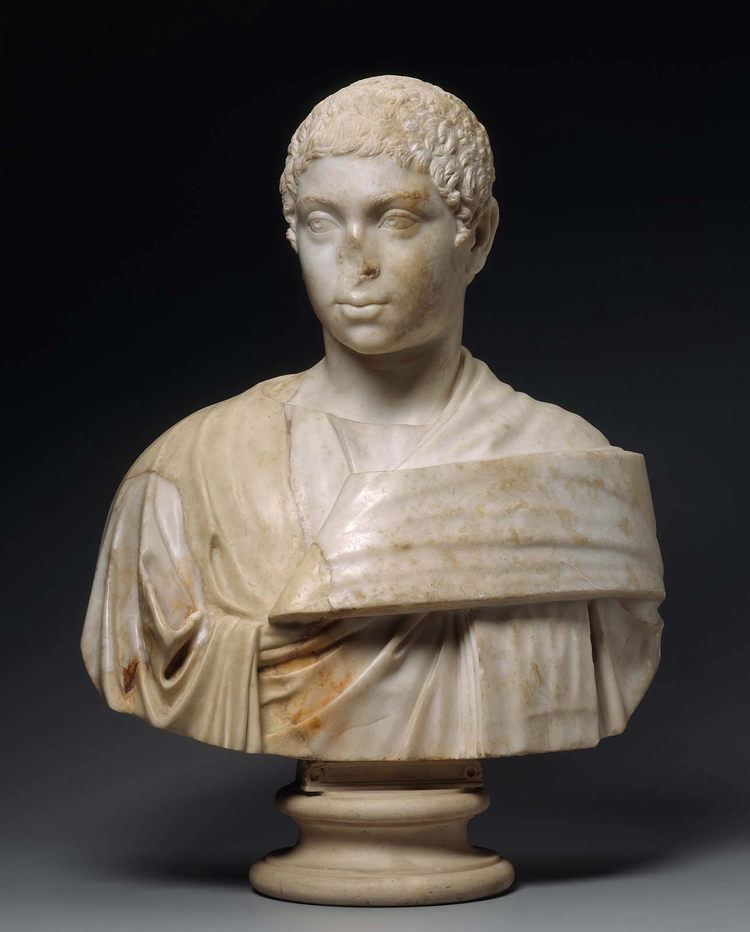
Roman scandal 22 elagabalus and the problem of teen rule
Family and priesthood
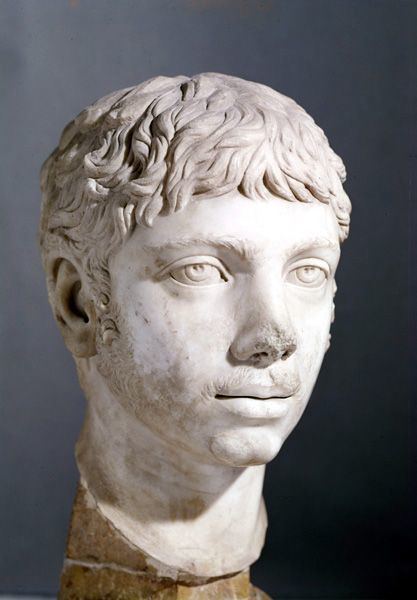
Elagabalus was born around the year 203 to Sextus Varius Marcellus and Julia Soaemias Bassiana. His father was initially a member of the Equites class, but was later elevated to the rank of senator. His grandmother, Julia Maesa, was the widow of the consul Julius Avitus, the sister of Julia Domna, and the sister-in-law of the emperor Septimius Severus. He had at least one sibling: an unnamed elder brother. His mother, Julia Soaemias, was a cousin of the Roman emperor Caracalla. His other relatives included his aunt Julia Avita Mamaea and uncle Marcus Julius Gessius Marcianus and among their children, their son Severus Alexander. Elagabalus's family held hereditary rights to the priesthood of the sun god Elagabal, of whom Elagabalus was the high priest at Emesa (modern Homs) in Roman Syria.
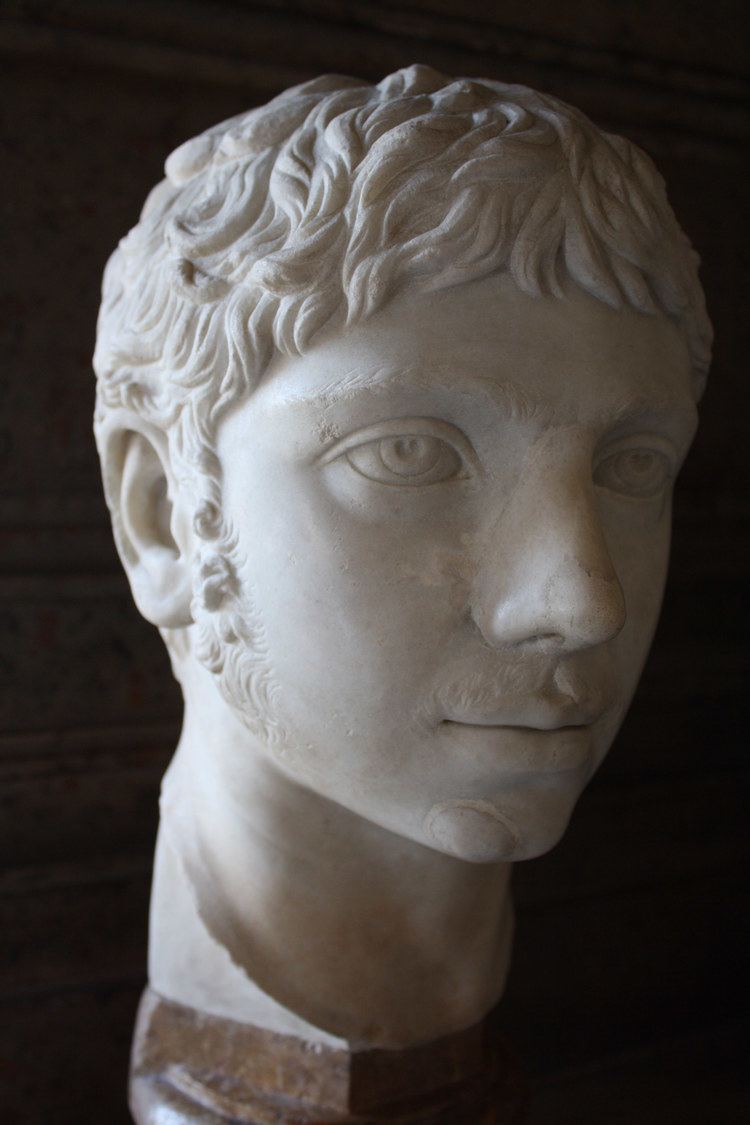
The deity Elagabalus was initially venerated at Emesa. This form of the god's name is a Latinized version of the Syrian Ilāh hag-Gabal, which derives from Ilāh (a Semitic word for "god") and gabal (an Arabic word for "mountain"), resulting in "the God of the Mountain," the Emesene manifestation of the deity.
The cult of the deity spread to other parts of the Roman Empire in the 2nd century; a dedication has been found as far away as Woerden (Netherlands), near the Roman limes. The god was later imported and assimilated with the Roman sun god known as Sol Indiges in republican times and as Sol Invictus during the second and third centuries CE. In Greek the sun god is Helios, hence "Heliogabalus", a hybrid conjunction of "Helios" and "Elagabalus".
Rise to power
When the emperor Macrinus came to power, he suppressed the threat against his reign from the family of his assassinated predecessor, Caracalla, by exiling them—Julia Maesa, her two daughters, and her eldest grandson Elagabalus—to their estate at Emesa in Syria. Almost upon arrival in Syria, Maesa began a plot with her advisor and Elagabalus' tutor Gannys, to overthrow Macrinus and elevate the fourteen-year-old Elagabalus to the imperial throne.
His mother publicly declared that he was the illegitimate son of Caracalla, and therefore deserving the loyalty of Roman soldiers and senators who had sworn allegiance to Caracalla. After Julia Maesa displayed her wealth to the Third Legion at Raphana they swore allegiance to Elagabalus. At sunrise on 16 May 218, Publius Valerius Comazon, commander of the legion, declared him emperor. To strengthen his legitimacy Elagabalus assumed Caracalla's names, Marcus Aurelius Antoninus.
In response Macrinus dispatched his Praetorian prefect Ulpius Julianus to the region with a contingent of troops he considered strong enough to crush the rebellion. However, this force soon joined the faction of Elagabalus when, during the battle, they turned on their own commanders. The officers were killed and Julianus' head was sent back to the emperor.
Macrinus now sent letters to the Senate denouncing Elagabalus as the False Antoninus and claiming he was insane. Both consuls and other high-ranking members of Rome's leadership condemned Elagabalus, and the Senate subsequently declared war on both Elagabalus and Julia Maesa.
Macrinus and his son, weakened by the desertion of the Second Legion due to bribes and promises circulated by Julia Maesa, were defeated on 8 June 218 at the Battle of Antioch by troops commanded by Gannys. Macrinus fled to Italy, disguised as a courier, but was intercepted near Chalcedon and executed in Cappadocia. His son Diadumenian, sent as a friendly hostage to the Parthian court as a guarantee of peace between the states, was captured at Zeugma and also put to death.
Elagabalus declared the date of the victory at Antioch to be the beginning of his reign and assumed the imperial titles without prior senatorial approval. This violated tradition but was a common practice among 3rd-century emperors nonetheless. Letters of reconciliation were dispatched to Rome extending amnesty to the Senate and recognizing the laws, while also condemning the administration of Macrinus and his son.
The senators responded by acknowledging Elagabalus as emperor and accepting his claim to be the son of Caracalla. Caracalla and Julia Domna were both deified by the Senate, both Julia Maesa and Julia Soaemias were elevated to the rank of Augustae, and the memory of both Macrinus and Diadumenian was expunged by the Senate. The former commander of the Third Legion, Comazon, was appointed commander of the Praetorian Guard.
Emperor (218–222)
Elagabalus and his entourage spent the winter of 218 in Bithynia at Nicomedia, where the emperor's religious beliefs first presented themselves as a problem. The contemporary historian Cassius Dio suggests that Gannys was in fact killed by the new emperor because he pressured Elagabalus to live "temperately and prudently". To help Romans adjust to having an oriental priest as emperor, Julia Maesa had a painting of Elagabalus in priestly robes sent to Rome and hung over a statue of the goddess Victoria in the Senate House. This placed senators in the awkward position of having to make offerings to Elagabalus whenever they made offerings to Victoria.
The legions were dismayed by his behaviour and quickly came to regret having supported his accession. While Elagabalus was still on his way to Rome, brief revolts broke out by the Fourth Legion at the instigation of Gellius Maximus, and by the Third Legion, which itself had been responsible for the elevation of Elagabalus to the throne, under the command of Senator Verus. The rebellion was quickly put down, and the Third Legion disbanded.
When the entourage reached Rome in the autumn of 219, Comazon and other allies of Julia Maesa and Elagabalus were given powerful and lucrative positions, to the chagrin of many senators who did not consider them worthy of such privileges. After his tenure as Praetorian prefect, Comazon would serve as the city prefect of Rome three times, and as consul twice. Elagabalus soon devalued the Roman currency. He decreased the silver purity of the denarius from 58% to 46.5% — the actual silver weight dropping from 1.82 grams to 1.41 grams. He also demonetized the antoninianus during this period in Rome.
Elagabalus tried to have his presumed lover, the charioteer Hierocles, declared Caesar, while another alleged lover, the athlete Aurelius Zoticus, was appointed to the non-administrative but influential position of Master of the Chamber, or Cubicularius. His offer of amnesty for the Roman upper class was largely honoured, though the jurist Ulpian was exiled.
The relationships between Julia Maesa, Julia Soaemias, and Elagabalus were strong at first. His mother and grandmother became the first women to be allowed into the Senate, and both received senatorial titles: Soaemias the established title of Clarissima, and Maesa the more unorthodox Mater Castrorum et Senatus ("Mother of the army camp and of the Senate"). They held the title of Augusta as well, suggesting that they may have been the power behind the throne. Indeed, they exercised great influence over the young emperor throughout his reign, and can be found on many coins and inscriptions—a rare honor for Roman women.
Religious controversy
Since the reign of Septimius Severus, sun worship had increased throughout the Empire. Elagabalus saw this as an opportunity to install Elagabal as the chief deity of the Roman pantheon. The god was renamed Deus Sol Invictus, meaning God the Undefeated Sun, and honored above Jupiter.
As a token of respect for Roman religion, however, Elagabalus joined either Astarte, Minerva, Urania, or some combination of the three to Elagabal as consort. A union between Elagabal and a traditional goddess would have served to strengthen ties between the new religion and the imperial cult. In fact, there may have been an effort to introduce Elagabal, Urania, and Athena as the new Capitoline triad of Rome—replacing Jupiter, Juno, and Minerva.
He aroused further discontent when he married the Vestal Virgin Aquilia Severa, claiming the marriage would produce "godlike children". This was a flagrant breach of Roman law and tradition, which held that any Vestal found to have engaged in sexual intercourse was to be buried alive.
A lavish temple called the Elagabalium was built on the east face of the Palatine Hill to house Elagabal, who was represented by a black conical meteorite from Emesa. Herodian wrote "this stone is worshipped as though it were sent from heaven; on it there are some small projecting pieces and markings that are pointed out, which the people would like to believe are a rough picture of the sun, because this is how they see them".
In order to become the high priest of his new religion, Elagabalus had himself circumcised. He forced senators to watch while he danced around the altar of Deus Sol Invictus to the accompaniment of drums and cymbals. Each summer solstice he held a festival dedicated to the god, which became popular with the masses because of the free food distributed on these occasions. During this festival, Elagabalus placed the Emesa stone on a chariot adorned with gold and jewels, which he paraded through the city:
A six horse chariot carried the divinity, the horses huge and flawlessly white, with expensive gold fittings and rich ornaments. No one held the reins, and no one rode in the chariot; the vehicle was escorted as if the god himself were the charioteer. Elagabalus ran backward in front of the chariot, facing the god and holding the horses' reins. He made the whole journey in this reverse fashion, looking up into the face of his god.
The most sacred relics from the Roman religion were transferred from their respective shrines to the Elagabalium, including the emblem of the Great Mother, the fire of Vesta, the Shields of the Salii, and the Palladium, so that no other god could be worshipped except in association with Elagabal.
Sex/gender controversy
The question of Elagabalus' sexual orientation is confused, owing to salacious and unreliable sources. Elagabalus married and divorced five women, three of whom are known. His first wife was Julia Cornelia Paula; the second was the Vestal Virgin Julia Aquilia Severa.
Within a year, he abandoned her and married Annia Aurelia Faustina, a descendant of Marcus Aurelius and the widow of a man he had recently had executed. He had returned to his second wife Severa by the end of the year. According to Cassius Dio, his most stable relationship seems to have been with his chariot driver, a blond slave from Caria named Hierocles, whom he referred to as his husband.
The Augustan History claims that he also married a man named Zoticus, an athlete from Smyrna, in a public ceremony at Rome. Cassius Dio reported that Elagabalus would paint his eyes, epilate his body hair and wear wigs before prostituting himself in taverns, brothels, and even in the imperial palace:
Finally, he set aside a room in the palace and there committed his indecencies, always standing nude at the door of the room, as the harlots do, and shaking the curtain which hung from gold rings, while in a soft and melting voice he solicited the passers-by. There were, of course, men who had been specially instructed to play their part. For, as in other matters, so in this business, too, he had numerous agents who sought out those who could best please him by their foulness. He would collect money from his patrons and give himself airs over his gains; he would also dispute with his associates in this shameful occupation, claiming that he had more lovers than they and took in more money.
Herodian commented that Elagabalus enhanced his natural good looks by the regular application of cosmetics. He was described as having been "delighted to be called the mistress, the wife, the queen of Hierocles" and was reported to have offered vast sums of money to any physician who could equip him with female genitalia. Elagabalus has been characterized by some modern writers as transgender.
Fall from power
By 221 Elagabalus' eccentricities, particularly his relationship with Hierocles, increasingly provoked the soldiers of the Praetorian Guard. When Elagabalus' grandmother Julia Maesa perceived that popular support for the emperor was waning, she decided that he and his mother, who had encouraged his religious practices, had to be replaced. As alternatives, she turned to her other daughter, Julia Avita Mamaea, and her daughter's son, the thirteen-year-old Severus Alexander.
Prevailing on Elagabalus, she arranged that he appoint his cousin Alexander as his heir and that the boy be given the title of Caesar. Alexander shared the consulship with the emperor that year. However, Elagabalus reconsidered this arrangement when he began to suspect that the Praetorian Guard preferred his cousin to himself.
Following the failure of various attempts on Alexander's life, Elagabalus stripped his cousin of his titles, revoked his consulship, and invented the rumor that Alexander was near death, in order to see how the Praetorians would react. A riot ensued, and the Guard demanded to see Elagabalus and Alexander in the Praetorian camp.
Assassination
The emperor complied and on 11 March 222 he publicly presented his cousin along with his own mother, Julia Soaemias. On their arrival the soldiers started cheering Alexander while ignoring Elagabalus, who ordered the summary arrest and execution of anyone who had taken part in this display of insubordination. In response, members of the Praetorian Guard attacked Elagabalus and his mother:
He made an attempt to flee, and would have got away somewhere by being placed in a chest had he not been discovered and slain, at the age of eighteen. His mother, who embraced him and clung tightly to him, perished with him; their heads were cut off and their bodies, after being stripped naked, were first dragged all over the city, and then the mother's body was cast aside somewhere or other, while his was thrown into the [Tiber].
Following his assassination, many associates of Elagabalus were killed or deposed, including his lover Hierocles. His religious edicts were reversed and the stone of Elagabal was sent back to Emesa. Women were again barred from attending meetings of the Senate. The practice of damnatio memoriae—erasing from the public record a disgraced personage formerly of note—was systematically applied in his case.
Legacy
Due to the ancient tradition about him, Elagabalus became something of an (anti-)hero in the Decadent movement of the late 19th century. He often appears in literature and other creative media as the epitome of a young, amoral aesthete. His life and character have informed or at least inspired many famous works of art, by Decadents, even by contemporary artists. The most notable of these works include:
